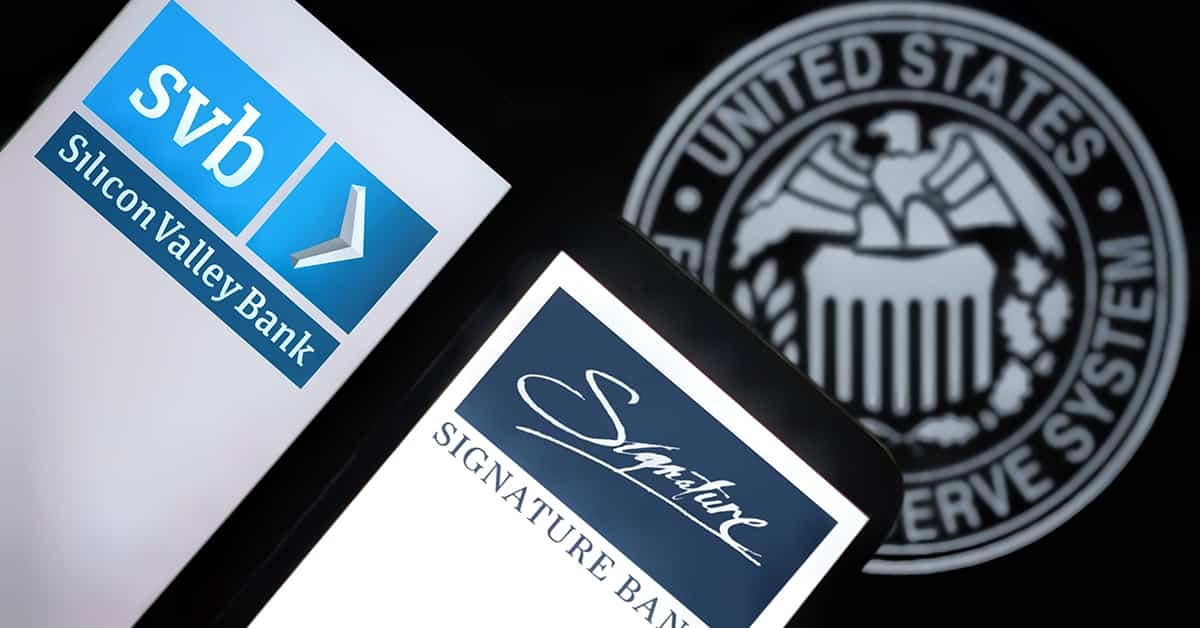Could the SVB and Signature Bank runs have been prevented?

In a matter of two days, the Federal Deposit Insurance Corporation shut down Silicon Valley Bank (SVB) and Signature Bank. Two relatively small banks—their combined assets of $300 billion are a smidgeon in comparison with the US’s $23 trillion of banking assets—were big enough to create havoc in the financial system, send shudders through the markets, and raise irate comments from taxpayers and politicians.
Bank runs have a long history in the US, and when they are big enough, they sometimes lead to major overhaul. The crash of 1907 led to creation of the Federal Reserve, the savings and loan loan crisis of the 1980s and 1990s led to regulatory reforms, and the 2008 financial crisis was followed by the Dodd-Frank Act: another round of financial services industry overhaul.
Some place the blame on modern technologies that cause bank runs to trigger more rapidly by speeding up funds withdrawal while social media can spread rumors at lightning speed.
But fundamentals are still what matter most, says Viral Acharya, professor of economics at New York University’s Stern School of Business. Acharya, who earlier served as deputy governor of the Bank of India, pointed a finger at Dodd-Frank.
“Why was a bank of this size not subjected to stress tests, and more importantly, included under the liquidity coverage ratio requirements which were put in place after the global financial crisis?” he says. “That was clearly because the 2018 change in the law shifted the bank threshold size from $50 billion to $250 billion.”
Even if the relaxation of the Dodd Frank is set aside, Acharya adds, there remains the issue of why a basic factor like the increase in interest rates was not factored in. “Many people are putting out estimates of unrecognized losses at individual bank level,” he notes. “So presumably, it should have been possible for the regulators to have done this prior to this episode.”
Additionally, years of quantitative easing have left the financial system weaker, says Acharya, who last year co-authored a paper, “Why Shrinking Central Bank Balance Sheets Is an Uphill Task” with the Kansas City Fed. “If the past repeats,” the paper predicted, “the shrinkage of the central bank balance sheet [following years of asset purchases] is not likely to be an entirely benign process and will require careful monitoring of the size of on- and off-balance-sheet demandable claims on the banking sector.”
That is because quantitative easing—as the asset purchases were known—“leaves the banking system with a lot of uninsured deposits,” Acharya says. “And when quantitative tightening is embarked upon, it’s not like these deposits just go away. It seems that the central bank balance sheet expansion does leave the financial system somewhat vulnerable.”
To calm the waters and avoid systemic risks, the Fed and the Treasury Department announced that all deposits at SVB and Signature will be fully covered: not just the FDIC-insured portion. That decision is paying off in the short term, allowing depositors to pay wages and rent and keeping the panic from extending to other banks.
But the regulators’ moves also raise the issue of moral hazard. If all deposits—insured and uninsured—are covered, couldn’t that encourage banks to assume unwanted risks and depositors to ignore the risks their banks are taking?
“Is [the banking] system really so fragile that it can’t absorb some small haircut on these banks’ uninsured deposits?” Sheila Bair, former FDIC chair and a senior fellow at the Center for Financial Stability, wrote in a comment to the Financial Times. “If it is as safe and resilient as we’ve been constantly assured by the government, then the regulators’ move sets dangerous expectations for future bailouts.”
That raises the additional question of whether the recent tightening of the US monetary policy has been too drastic and too rapid for many banks to absorb.
“The bigger problem,” Bair wrote, “is the Fed’s too-rapid unwinding of 14 years of lax monetary policy. When rates rise, the market value of financial assets fall, and banks hold a lot of financial assets. The Fed needs to hit pause on further rate rises to provide time to assess their impact on the financial system.”
While blanket coverage of SVB and Sovereign’s deposits appears to be halting the crisis for those two banks, what happens if depositor angst hits more, and perhaps bigger, institutions?
“What has happened historically is that if more banks get into this situation, at some point it becomes hard to continue to bail large investors, and those who don’t have explicit deposit insurance, because some losses are being borne by the regulator or the Treasury,” Acharya says.
“The right thing to do,” he argues, “is to limit the taxpayer losses down the line. And the only way that can be done is through recognition of losses, through stress-testing of further interest rate hikes, and then getting the banks that are not in good shape on capital to either raise capital, or arrange their acquisitions or mergers with other banks.”
The Fed and Treasury are already taking that last step with SVB. Whether the current crisis will prompt wider reforms, as has happened in the past, without getting much worse, remains to be seen.



